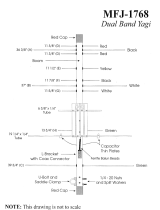
13
4) Startup/Fill Cycle–Move any ice away from the BC actuator paddle (located at the
top of the bin). Move the ush switch to the "ICE" position. X5 relay and WV energize.
Reservoir lls, LFS closes, nothing happens at this time. The reservoir continues to ll.
X5 Relay Diagnosis: Check that WV energizes and lls the reservoir. If not, conrm BC
is closed. See "II.D. Bin Control Check." Conrm ush switch is in the "ICE" position and
switch is closed. Next, check for 24VAC at X5 #7 (V) to X5relay #8 (LBU). If 24VAC is
present, check for 24VAC at X5 relay #5(W/R) to neutral (LBU) and at #3(R) to neutral
(LBU). If24VAC is present at #5(W/R) and not at #3 (R), replace X5 relay. If24VAC is
present at X5relay #3 (R), check X4relay. X4 Relay Diagnosis: Check for 24VAC at X4
relay #5 (R) to neutral (LBU) and at #1 (O) to neutral (LBU). If24VAC is present at X11
relay #5 (R) and not at #1(O), conrm X4relay is de-energized.
If X4 relay is energized, check for sticking UFS. See"II.E.Float Switch Check and
Cleaning." If X4 relay is de-energized, replace X4 relay. WV Diagnosis: If 24VAC is
present at X4 #1 (O), check WV coil continuity. Ifopen, replace WV.
5) Ice Purge Cycle–UFS closes, X4 relay energizes, WV de-energizes, and low-water
safety circuit (CB #3 and #4) closes. GM and X3 relay energize, 60 sec. Comp delay
timer starts. If HPS is open, CB does not get 24VAC control voltage and 35VDC supply
is not present for low-water safety circuit. HPSDiagnosis: If HPS is open, check that
the condenser air lter and coil are not clogged or restricted. Check that there are no
restrictions in the refrigeration circuit (capillary tube or drier). Let refrigeration circuit
pressures equalize. If HPS does not reset and pressures are equalized, replace HPS.
If pressures are not equalized, reclaim refrigerant and diagnose refrigeration circuit
restriction. X4RelayDiagnosis: Check for 35VDC at X4 relay #4 (DBU) to #6(BR).
If35VDC is present, X4 relay is de-energized or bad. Replace as necessary. If 0VDC
is present, GM energizes. GM Diagnosis: If GM does not energize and 0VDC is read
at CB#3 (BR) to CB #4(DBU), check for 115VAC at CB#7 (BR) to neutral (W) and CB
#8(W/BR) to neutral (W). If 115VAC is present on CB #7 (BR) and not on CB
#8 (W/BR), replace CB. If 115VAC is present on CB #8 (W/BR), check GM external
protector and GM winding. IfGMstarts but the auger does not turn, check coupling
between auger and GM. X3 Relay Diagnosis: X3 relay energizes and starts 60 sec.
Comp delay timer in CB (CB #10 (W/BK) and #11 (W/O)). After 60 sec. timer terminates,
conrm Comp energizes. If not, check for 115VAC at X3 relay #7 (R) to X3relay #8(W).
If 115VAC is not present, check GM external protector and GM winding. If115VAC is
present, check for 35VDC at X3 relay #4 (W/O) to X3 relay #6(W/BK). If 35VDC is
present, replace X3 relay. If 0VDC is present and Comp does not energize, replace CB.
See "II.C. Control Board Check."
6) Freeze Cycle–GM and X3 relay continue. Comp and FM energize. X4 relay
energizes and de-energizes as needed through LFS/UFS. Ice production begins
4to 6 minutes after Comp and FM start depending on ambient and water conditions.
Diagnosis:Check that Comp and FM energize. If not, check for 115VAC at CB X2 relay
#4 (BR) to neutral (W) and CB X2 relay #3 (O) to neutral (W). If 115VAC is present at
CB X2 relay #4 (BR) and not at CB X2 relay #3 (O), replace CB. If 115VAC is present at
CB X2 relay #3 (O) and Comp and FM do not energize, for Comp check Comp winding,
start capacitor, and start relay. ForFM, check FM windings and fan blade for binding.
























